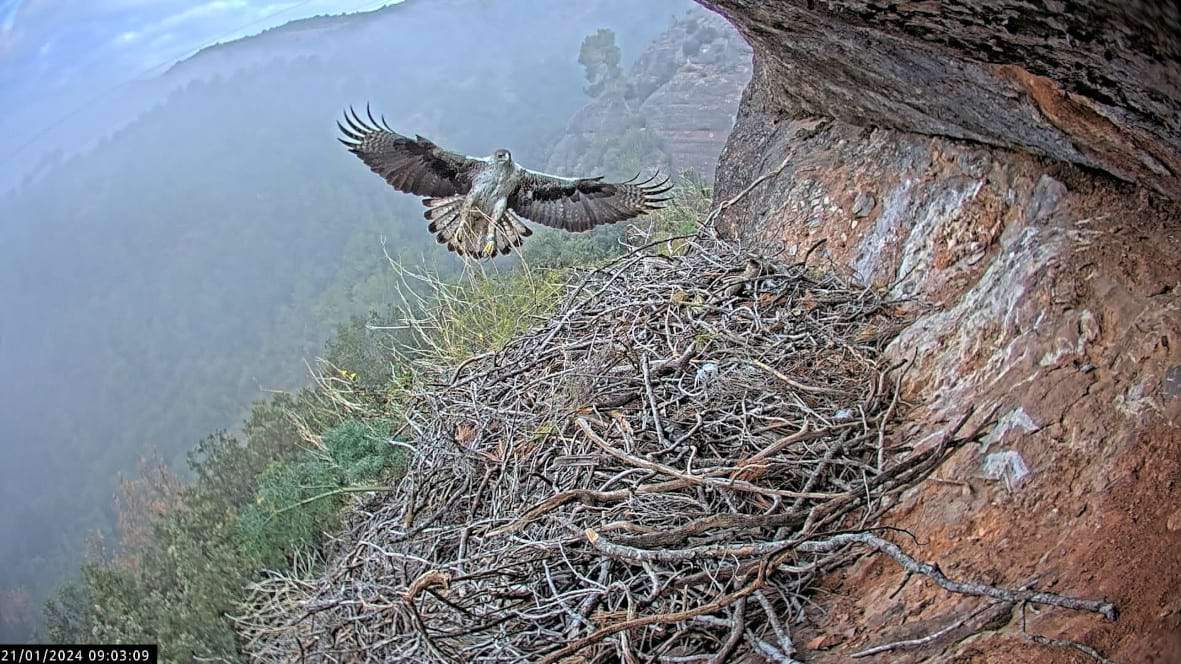In the Catalan natural park of Sant Llorenç del Munt i l'Obac - about 40km inland from the city of Barcelona, beyond Terrassa - there is a nesting pair of Bonelli's eagles (Aquila fasciata) which park staff are watching closely. And now, the monitoring of the two birds of prey has been improved thanks to the installation of a high-resolution camera focused on the nest, which will make it be possible to deepen the observation of the raptors. The setting up of the camera is part of the international program Tech4Nature, which is being carried out by Barcelona's Diputació (Provincial Council) with the collaboration of the International Union for the Conservation of Nature (IUCN) and the company Huawei.
The camera will facilitate the study of the behaviour of the pair of raptors, an endangered species
The camera, placed by rural agents belonging to Catalonia's Generalitat administration (shown at the start of the video) and managed by Miranatura, was installed prior to the nesting period. The monitoring is complemented by the placement of a tiny GPS receiver on the male eagle's leg, held on by a ring. The two pieces of equipment will facilitate the study of the behaviour of the two Bonelli's eagles, a species found in territories on both shores of the Western Mediterranean as well as beyond, but in danger of extinction. One of the objectives is to understand more accurately how the birds react to disturbances in their nearby surroundings. The fact that another male Bonelli's that was being monitored last year was electrocuted after an incident with a nearby electricity tower shows the kind of risks that humans can pose for the species.
Public-private collaboration
Managers from IUCN and Huawei and their Tech4All program visited the Natural Park of Sant Llorenç del Munt i l'Obac on March 1st to learn more about the Tech4Nature project. During the meeting, an assessment was made of the first phase, which ended in 2023, and the tasks of the second phase, which will take place between 2024 and 2026, were planned. In the second stage, collaboration will continue with other natural spaces in monitoring visitors in key habitats, such as high mountain flora. With the results obtained and with the support of a technology centre, it is planned to design an alert system using bioacoustics and images analyzed with artificial intelligence.
This project developed by the Diputació de Barcelona responds to the UN Sustainable Development Goals (SDGs) numbers 3 "Health and well-being", 11 "Sustainable cities and communities" and 15 "Life on Earth". The 17 SDGs were proclaimed by the United Nations General Assembly on September 25th, 2015 and are part of the 2030 Global Agenda. The Diputació assumes responsibility for compliance and carries out its action to support local governments of the province in accordance with the SDGs.

